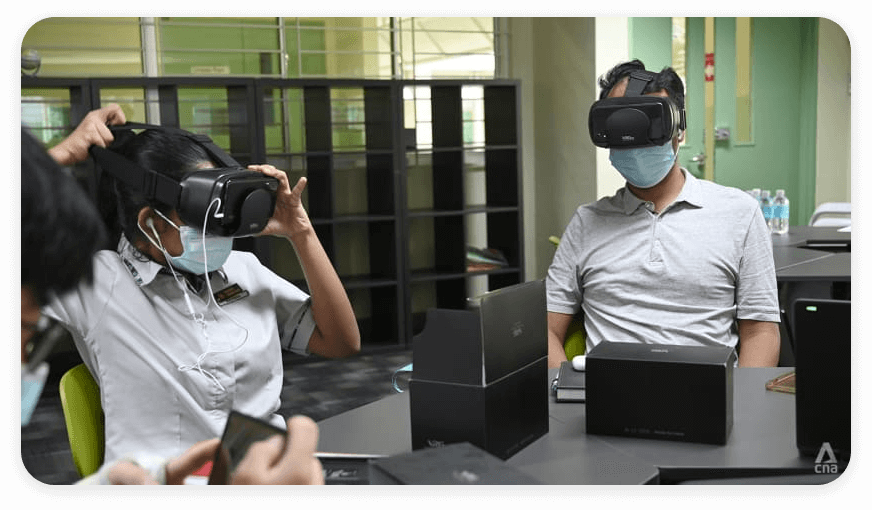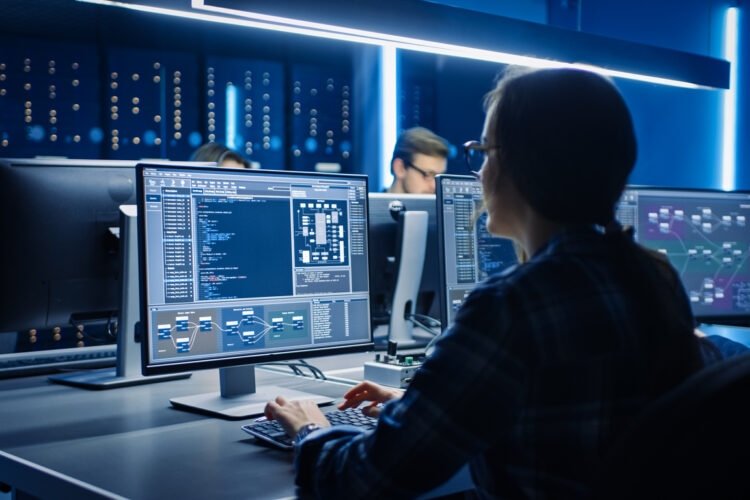Virtual Reality (VR) technology has been applied to various industries; for example, VR is proving to be a game-changer in education. In this specific field, there are some gadgets and technologies that are helping teachers and students to improve their teaching and learning.
This blog post will discuss the uses of VR goggles for teaching geography lessons. In Singapore, they are using VR to transport students to different parts of the world, allowing them to explore different environments and cultures in a way that was previously impossible.
So, let’s dive in and explore the exciting world of VR technology and its impact on geography education!
What is VR geography?
VR geography refers to the use of virtual reality technology to create immersive and interactive simulations of geographic environments, so its users can explore and interact with other environments and learn about different places and cultures without physically traveling there. In education, students can use VR geography to explore historical sites or learn about the geography of different regions of the world. This VR application type can also be used in industries like tourism and urban planning.
Examples of the use of VR to teach geography
Virtual tours
Virtual tours to historical landmarks, natural wonders, and cultural sites from around the world with VR technology. This can help students learn about different cultures, geography, and history in an immersive and interactive way.
3D geographic data visualization
High school students can use VR to visualize geographic data in 3D, helping them to better understand and analyze information such as population density, land use, and climate patterns.
Simulations of geographical phenomena
High schools can use VR to simulate natural phenomena such as volcanic eruptions, earthquakes, and weather patterns, allowing them to learn about these events in a more engaging and interactive way.
How are Singapore teachers using VR to teach geography to their students
Imagine yourself enveloped by the whisper of the South China Sea and the roaring of the waves hitting the breakwaters at the beautiful East Coast Park of Singapore while you turn your head around to choose where you want to direct your gaze. Now imagine you are doing this while standing in your high-school classroom.
For those of us who received our geography lessons surrounded by those flat, rather abstract sketches of territories called maps, this would have sounded like a science-fiction scenario. Yet, this is what a geography lesson looks like in contemporary Singapore. And it is quite easy for us to grasp how the experience of a particular space delivered through VR goggles is much more compelling and interesting than looking at maps, pictures, or videos as we did when we were high-school students.
The role of VR goggles in geography school lessons
Today, high-school students in Singapore prepare for a field trip by watching 360-degree videos of the East Coast Park breakwater area with their VR goggles. 
The process of using geography VR goes like this:
First, using their own smartphones, they scan a QR code that takes them to a YouTube video especially produced by one of their teachers; once inside the YouTube video, they select the VR Option; then, the smartphones are placed in a compartment at the front of the goggles; finally, students connect wireless earbuds to their VR devices, which adds to the images of the coast the sense of the soundscape that surrounds the area.
While they explore this virtual environment at their will, they listen to their teacher’s voice, offering them a first approach to the subjects they will be learning throughout their lessons. But the experience in the virtual environment is not intended to substitute actual physical presence entirely. Rather, it is aimed at reinforcing and complementing other types of experiences that are also part of a student’s learning process. In fact, teachers believe that VR can ignite an interest in fieldwork much more effectively than pictures, videos, or maps were able to do.
After exploring the area with VR goggles, students are taken to East Coast Park to continue their lessons. For teachers, being physically in the field is key to understanding how knowledge is not merely something emerging from books (or VR goggles) but something constructed by people. Also, students state that the opportunity to discuss and comment on what they learn near their classmates -something that was severely limited by the pandemic-, has also made them more passionate about the subjects of their lessons. And the cherry on top of the cake is that this also helps fight climate change.
VR geography teaching and the challenge of climate change
There is still another key difference in how high-school students today experience geography lessons compared to a few decades ago. While the regions and spaces described by our geography teachers and displayed on maps in our classrooms could sound distant, strange, and even somewhat abstract to us, kids today seem to have a much clear conscience of how everything is connected, how our planet works as a system, and how a certain event -no matter how far away from where we are it takes place-, may have an impact in our own life. Not surprisingly, an issue hovers constantly over today’s tech-filled geography lessons: the challenge of climate change and how organizations and governments plan to tackle it.
Far from detaching students from reality, technology is being used to help them understand how their lessons are deeply connected to real-life issues. In this sense, geography teachers in Singapore try to ensure that their students learn the lesson and understand why they must do it. After all, in Singapore and all around the world, today’s high-school students will inherit the multiple issues caused by climate change. In particular, for Singapore, being a city-state surrounded by water, the rise of sea levels poses an existential threat that will demand the efforts of more than one generation. Luckily, VR and advanced technology features are giving high-school students of today the best possible tools they need to approach the biggest challenge ahead for our species.












